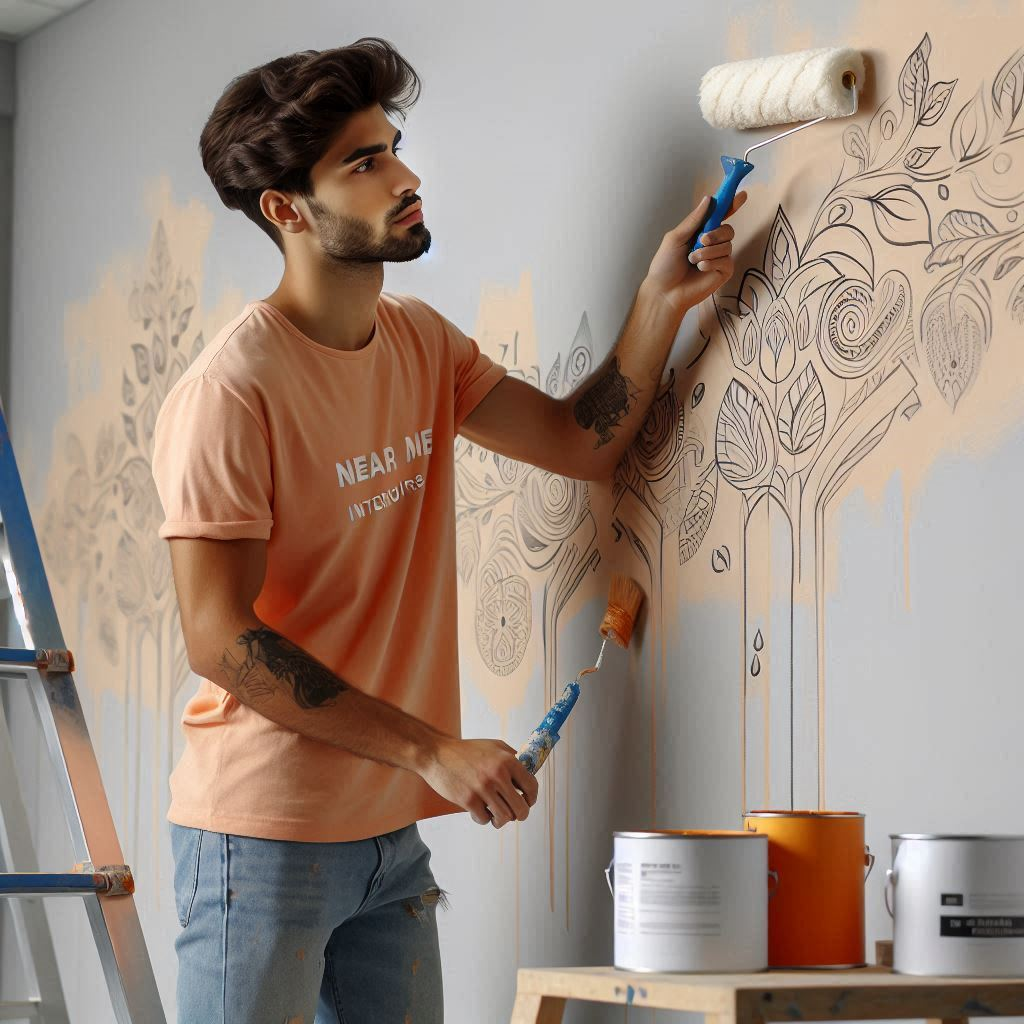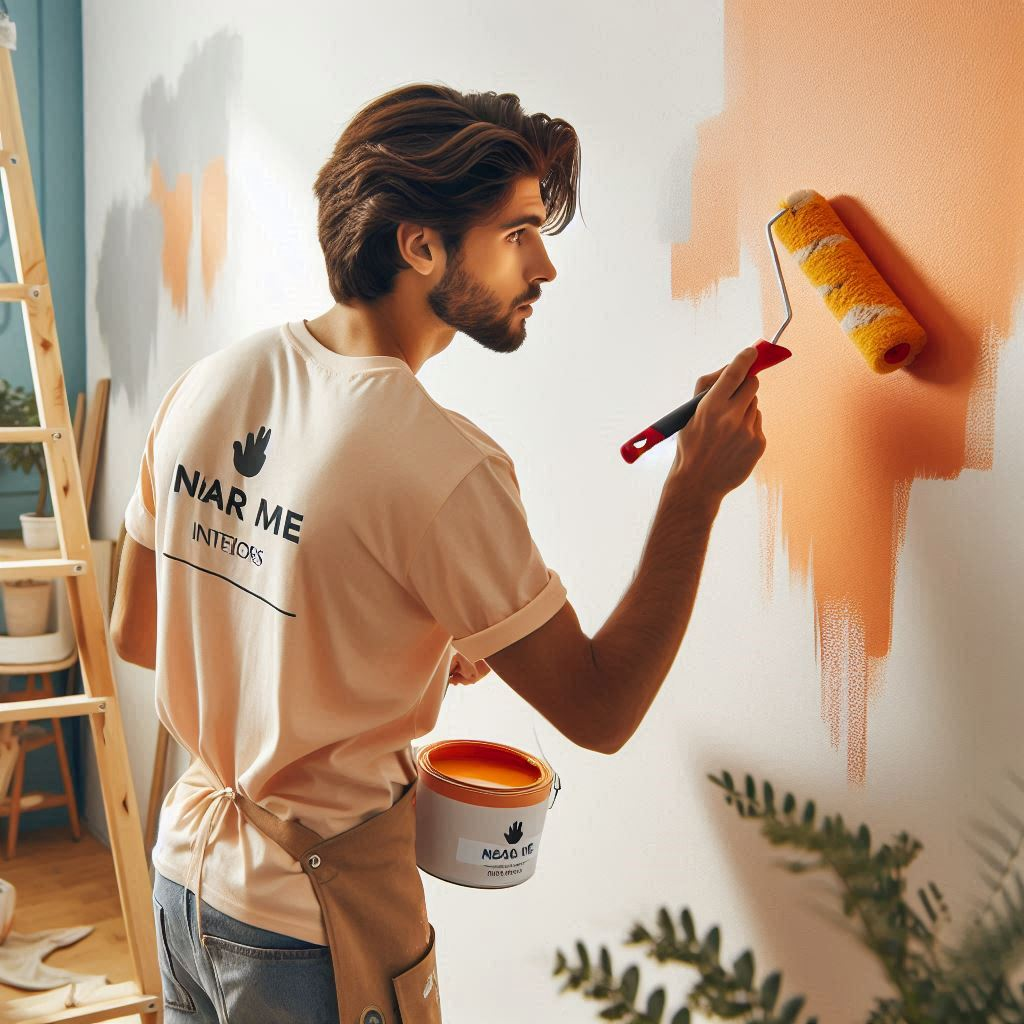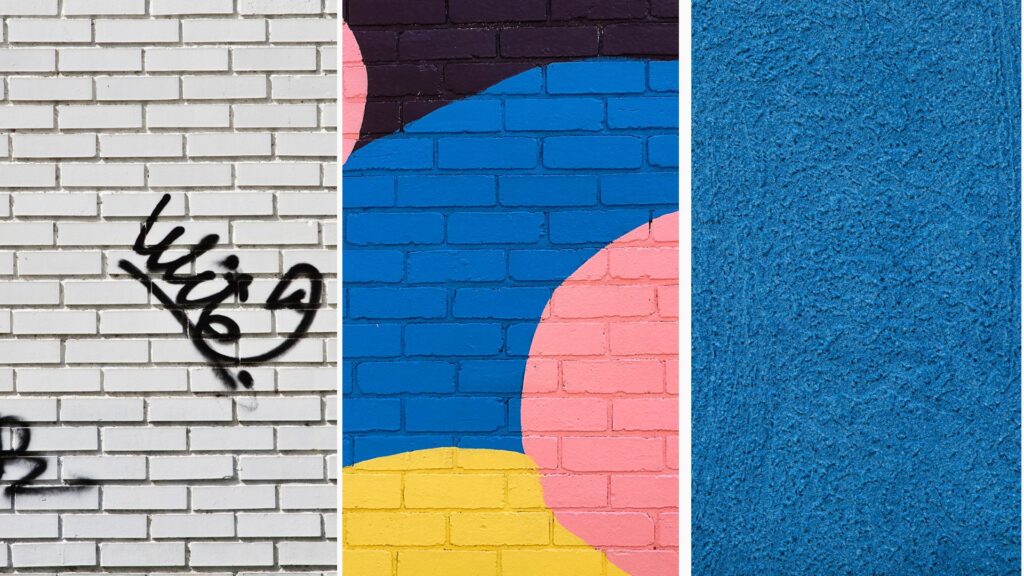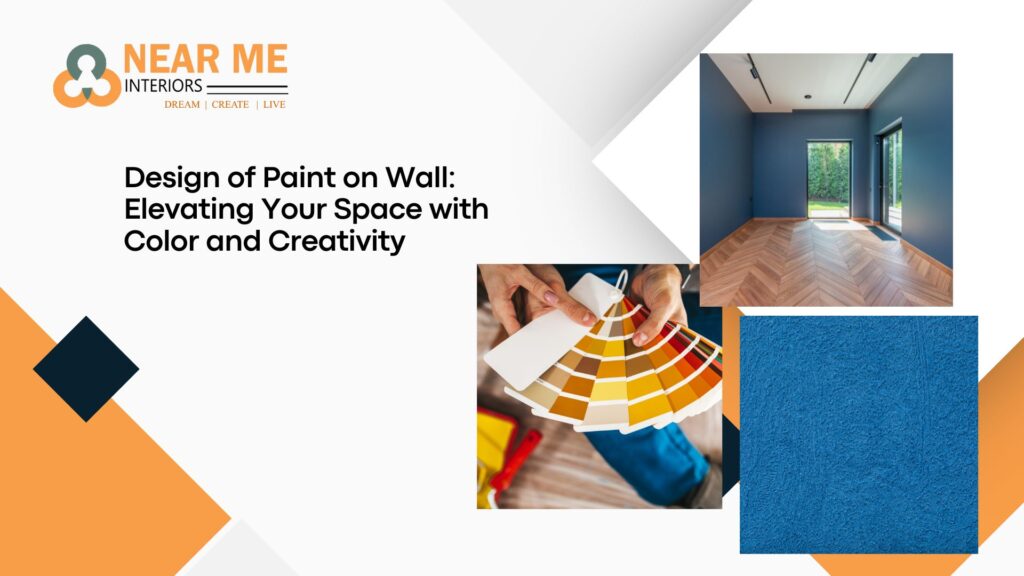Choosing the right paint design for your walls can transform your home from an ordinary living space into a work of art. At Near Me Interiors, we understand the power that color and design hold in shaping the atmosphere of a room. Whether you’re aiming for a subtle and calming environment or a bold and vibrant statement, the right wall paint design can reflect your personality and enhance the architectural features of your home.
In this article, we will explore various wall paint design ideas, techniques, and trends that can inspire you to create a unique and personalized space. From modern geometric patterns to timeless color palettes, we offer comprehensive insights to help you make informed decisions for your next interior design project.
Why Wall Paint Design Matters
Wall paint goes beyond simply covering your walls. It is a key element in interior design that affects the overall ambiance, mood, and energy of a space. The design of paint on the wall not only serves as a decorative feature but also impacts how we perceive a room’s size, light, and structure.
By carefully selecting colors and patterns, you can emphasize architectural elements, create focal points, or even visually change the dimensions of a room. For instance, lighter colors can make a small room appear larger, while darker shades add warmth and coziness to more spacious areas.



Top Wall Paint Design Ideas for Modern Homes
1. Geometric Patterns
One of the most popular trends in modern wall paint design is the use of geometric patterns. This technique is perfect for creating a focal wall that draws attention and adds an artistic touch to the room. Bold shapes such as triangles, hexagons, and zigzags can be painted in contrasting colors to create a dynamic, contemporary look.
For a more subtle effect, choose shades within the same color family to achieve a tone-on-tone geometric design. This approach works particularly well in bedrooms, living rooms, or home offices, where a balance between creativity and relaxation is desired.
2. Ombre Effect
The ombre painting technique is a great way to add depth and texture to your walls. This method involves blending two or more colors together, creating a gradient effect that transitions from light to dark or vice versa. Ombre walls are particularly effective in bedrooms and bathrooms, where a calming and serene atmosphere is often preferred.
This design works well with neutral tones, pastels, or even bolder colors like deep blues and emerald greens, depending on the desired mood. The gradual color transition gives the illusion of space and creates a unique visual experience for anyone entering the room.
3. Accent Walls with Bold Colors
If you’re not ready to commit to painting an entire room, consider creating an accent wall using bold and vibrant colors. Accent walls serve as the focal point of a room and can dramatically change the overall feel of the space without overwhelming it. Rich jewel tones like ruby red, sapphire blue, and emerald green are excellent choices for adding drama and sophistication to a room.
Pairing an accent wall with neutral tones for the rest of the room helps create balance, making the space feel stylish and cohesive. This approach is perfect for living rooms, dining rooms, or even entryways, where you want to make a lasting impression.
4. Two-Tone Walls
A timeless and elegant way to use color is by incorporating two-tone walls. This method involves using two complementary colors or shades on the same wall, often with one color on the upper half and a contrasting shade on the lower half. You can divide the two sections with a chair rail or simply leave them as is for a clean and modern look.
The two-tone wall design is particularly effective in dining rooms and hallways, as it adds sophistication and visual interest without being overpowering. You can experiment with a variety of color combinations, such as navy and white, grey and blush, or soft beige and charcoal.

5. Textured Paint Finishes
For those seeking something beyond traditional flat paint, textured paint finishes offer a way to add dimension and character to your walls. Techniques like sponge painting, rag rolling, and stucco can create a variety of textures, from subtle and soft to bold and dramatic. These finishes are ideal for accent walls or rooms where you want to make a unique design statement.
Textured finishes can mimic the appearance of materials like stone, fabric, or plaster, giving the room a more rustic or luxurious feel. They work particularly well in spaces such as bedrooms, living rooms, or even bathrooms where you want to create a sense of luxury and comfort.
Choosing the Right Color Scheme for Your Walls
The key to successful wall paint design lies in selecting the right color scheme. The colors you choose can affect the room’s overall atmosphere and evoke different emotions. Here are a few tips for choosing the perfect color palette:
1. Neutral Color Palettes
Neutral tones such as beige, grey, white, and taupe are timeless and versatile, making them an excellent choice for any room. These colors provide a clean, sophisticated backdrop that allows other design elements like furniture and decor to shine. Neutral colors are also ideal for creating a calm and serene environment, making them popular choices for bedrooms and living spaces.
2. Warm vs. Cool Colors
Warm colors, including reds, oranges, and yellows, evoke energy, warmth, and comfort. They are ideal for creating cozy and inviting spaces, such as living rooms and dining areas. In contrast, cool colors like blues, greens, and purples are known for their calming and soothing effects. They work well in bedrooms, bathrooms, and offices where a more relaxed atmosphere is desired.
3. Monochromatic Color Schemes
A monochromatic color scheme involves using various shades of the same color throughout a space. This technique creates a cohesive and harmonious look while allowing for subtle variations in tone and texture. Monochromatic designs work particularly well in modern and minimalist homes, where simplicity and elegance are key.
4. Complementary Color Schemes
For a bolder approach, consider a complementary color scheme, which involves using colors opposite each other on the color wheel, such as blue and orange, or red and green. This creates a high-contrast, vibrant look that adds energy and excitement to a room. Complementary color schemes are ideal for accent walls or spaces where you want to make a strong design statement.
Tips for a Professional Wall Paint Design
Creating a professional-looking wall paint design requires more than just selecting the right colors. Here are a few tips to ensure your project is a success:
1. Prepare the Surface
Before applying paint, it’s crucial to properly prepare the surface. This involves cleaning the walls, filling any holes or cracks, and applying a primer if necessary. A well-prepped wall will ensure a smooth and even finish.
2. Use High-Quality Paint and Tools
Investing in high-quality paint and tools is essential for achieving a professional finish. Quality paint provides better coverage, lasts longer, and is easier to clean. Similarly, using good brushes and rollers will help you achieve a smooth and streak-free application.
3. Plan Your Design
Take the time to plan your design carefully, especially if you’re incorporating patterns or multiple colors. Use painter’s tape to mark off areas where different colors or designs will be applied, and consider using stencils for more intricate patterns.
4. Test Colors Before Committing
Always test your chosen colors on a small section of the wall before committing to the entire room. Colors can look different depending on the lighting in the room, so it’s important to see how they will appear in different times of the day.
Conclusion: Let Your Walls Tell Your Story
At Near Me Interiors, we believe that the design of paint on your walls is more than just a finishing touch—it’s an opportunity to express your personal style and creativity. Whether you’re drawn to bold geometric patterns, soft ombre gradients, or timeless two-tone walls, our team of experts is here to help you create a space that reflects your unique vision.
If you’re ready to explore how wall paint design can transform your home, contact Near Me Interiors today for a consultation. Let us help you bring your design ideas to life with the perfect combination of colors, patterns, and finishes.






















